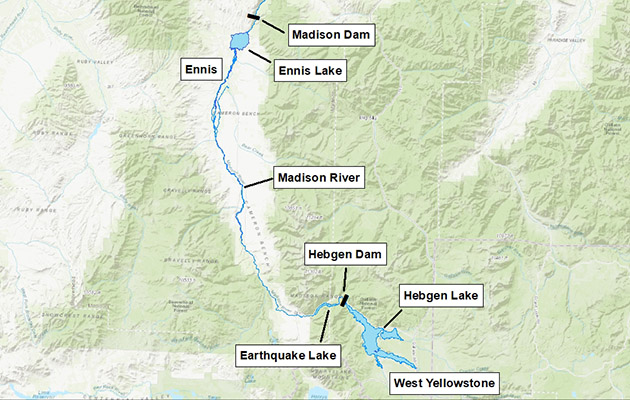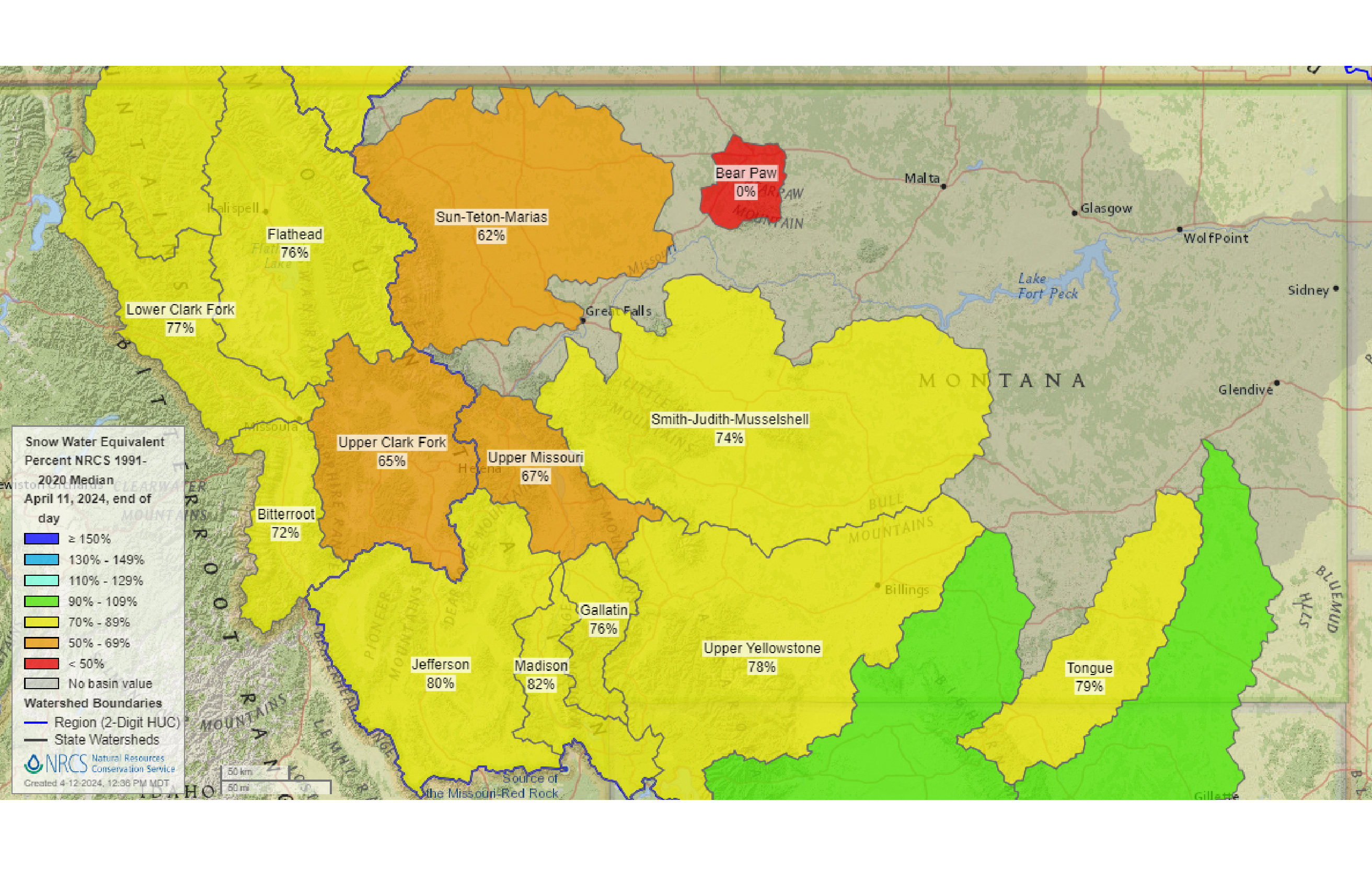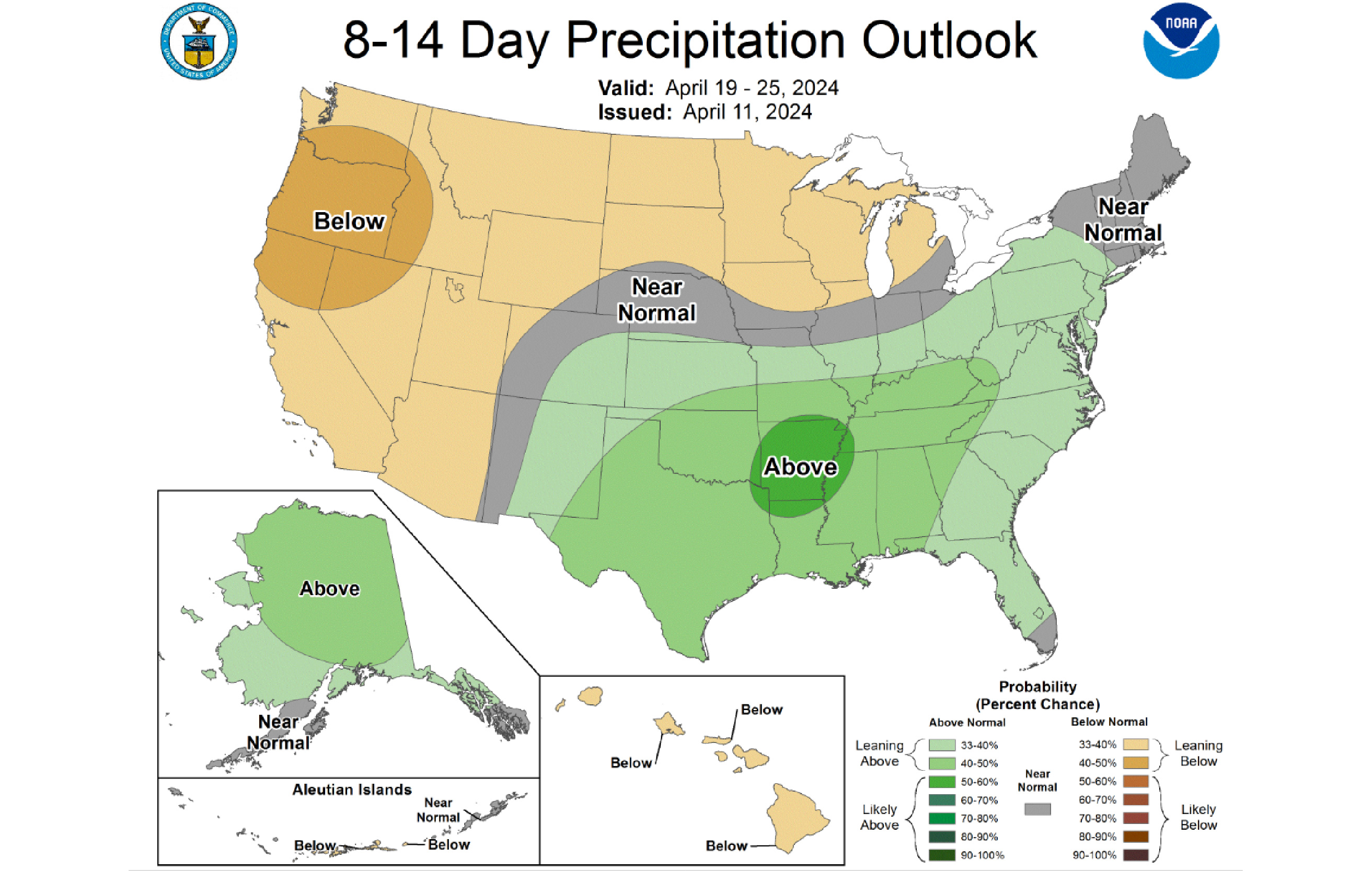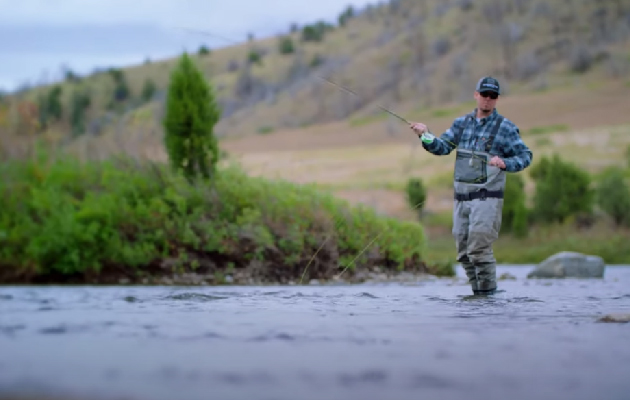
Madison River Drought Management
Our operations on the Madison River

Our operations on the Madison River
Hebgen is a storage reservoir and provides many benefits, including recreation and fish habitat. It also supports irrigation and electric generation downstream.
Hebgen Dam does not produce energy. We use Hebgen Dam to manage flows downstream for the Madison River fishery and Ennis Lake elevations.
Ennis Lake elevations are controlled by Madison Dam, which produces power. Madison Dam was recently upgraded a 12-megawatt facility, up from 8 megawatts.
Low snowpack could make for challenging water year in 2024

Low snowpack could make for challenging water year in 2024
March has started off strong with some much-needed snow around the Madison basin. Snowpack is still below the median, but trending in the right direction.
Hebgen Reservoir Conditions
Snowpack
As of mid-February, the four SNOTEL sites above Hebgen (Black Bear, Madison Plateau, Whiskey Creek, and West Yellowstone) are at 87% of the 30-year median. In an average water year, peak SWE (snow water equivalent) levels above Hebgen typically occur by April 15. After this point, while there may still be occasional snowstorms, the focus shifts from building snowpack to the transition into runoff.
Runoff Forecasts
Snowpack report
(As of Thursday, April 11, 2024)
| Station Name | Snow Water Equivalent (in) | Median Snow Water Equivalent (in) (1991-2020) | Snow Water Equivalent % of median (1991-2020) |
|---|---|---|---|
| Black Bear | 33.2 | 38.6 | 86 |
| Madison Plateau | 20.5 | 23.2 | 88 |
| West Yellowstone | 8.2 | 9 | 91 |
| Whiskey Creek | 13.8 | 14.8 | 93 |
Weather Forecast

Weather Forecast
Northwestern Energy will continue to monitor the snowpack conditions throughout the remaining winter and spring, but if things continue in this trend, it could be another challenging water year.
Managing water temperatures to protect the fishery

Managing water temperatures to protect the fishery
In the summer, we provide pulse flows out of Hebgen Lake into the Madison River below Ennis Lake. Our pulse flow program is designed to maintain lower Madison River temperatures at or below 80 degrees in order to prevent fish mortality caused from elevated water temperatures.
The Madison Thermal Decision Support System (DSS) was developed to protect fisheries and other river resources.
Madison-Hebgen Stakeholder Engagement Process
Stakeholder Engagement Presentations and Documents
Madison Drought Impact Study
How drought conditions impact our operations:
- Forecasts and modeling are closely followed by NorthWestern Energy to manage releases to the Madison River downstream and to capture and fill Hebgen Reservoir in the spring.
- Limited snowpack and spring precipitation create challenging conditions to fully fill Hebgen reservoir while providing required flows to the Madison River.
- Water releases from Hebgen reservoir feed Ennis Reservoir to support pulsed flow releases out of Madison Dam.
- The pulse flows are calculated using a model that helps determine the volume of water to be released, allowing for the conservation of water while maintaining safe water temperatures in the lower Madison River.
- Low flows directly affect the amount of electricity generated at Madison Dam.
- NorthWestern Energy’s stewardship responsibilities of the river resources include balancing the many interests of multiple stakeholders.
- The cooperation and flexibility of all help to protect and maintain the long-term health of the river system, which is our priority.


